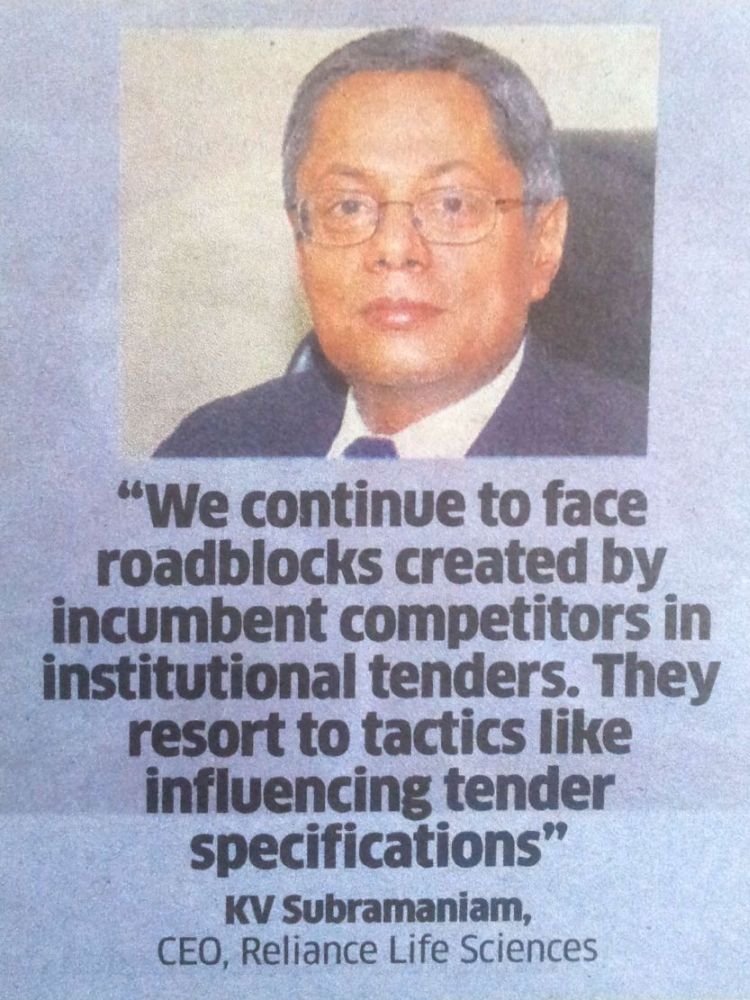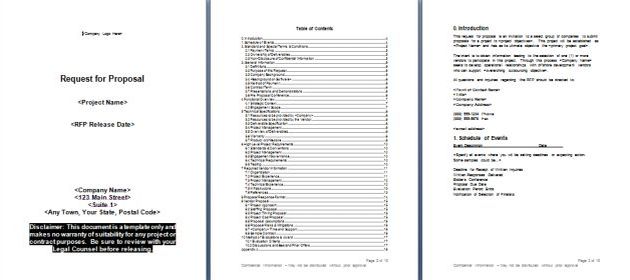“Can you give us an RFP template to share with our client?”, asked one of our customers recently. “We can Google it but you can save us the trouble if you have something readymade”.
Good they didn’t use Google.
There’s lot more to sharing an RFP template than finding, downloading and handing over a standard template available in the public domain.
For B2B technology providers, the opportunity to “share an RFP template” provides a phenomenal opening for injecting specs favorable to their product or service, thus shaping the evaluation process and increasing their win rates. They shouldn’t waste the opportunity by Googling and handing over a standard RFP template.
But vendors need to play this right. Most buyers are savvy enough to see through one-sided specs and throw the vendor’s RFP template – if not the vendor itself – out of the procurement process.
Shaping an RFP calls for “outside-in” thinking, where you start from the customer’s pain area, spec a solution that alleviates the pain and also happens to showcase your differentiators. Standard “inside-out” thinking will backfire.
Let me illustrate this approach with a case study.
The prospect was a large company with multiple production facilities and a wide network of regional and zonal offices. The company wanted to purchase and implement an ERP solution and invited all leading ERP vendors for a pre-bid conference. One of them – let’s call this company ACME – is the protagonist of this story. ACME’s sales manager had a good rapport with the prospect’s CIO and was invited to share a sample RFP template.
To give you a bit of background about the market: ACME implemented its ERP by itself. Whereas its competitors just sold their software and left it to the customer to get it implemented by a “third party implementation partner”. ACME touted self-implementation as a strong differentiator on the back of the logic that, since a product owner knows the product best, it should be the one to implement the product. This is classical “inside-out” thinking.
In line with its usual tactic of touting self-implementation as its USP, ACME added the following spec into the RFP template:
“Self-implementation: ERP vendor should implement its package by itself.”
Like it happens often in sales, the “inside-out” logic that makes great sense for a vendor crumbles faster than a cookie when competition enters the picture. The same thing happened here.
 ACME’s competitors obviously couldn’t fulfill this tender condition. But, contrary to what ACME conveniently expected, they didn’t just fold up their tent and go home.
ACME’s competitors obviously couldn’t fulfill this tender condition. But, contrary to what ACME conveniently expected, they didn’t just fold up their tent and go home.
Instead they billed their third-party implementation partner network as a major benefit, saying this provided access to global best practices and brought superior program management skills to the implementation. They also thwarted ACME’s thrust on self-implementation by saying that ACME was too small to attract third party implementation partners, which is why it had to do its implementations by itself.
In effect, competitors persuaded the prospect that, by touting self-implementation, ACME was merely trying to create a virtue out of a weakness. As a result, ACME’s attempt to stipulate self-implementation in the RFP went out the door.
This was a big blow to ACME because self-implementation was a major plank of ACME’s pitch. It was about to lose the golden opportunity to steer the purchase decision in its favor by spec’cing the RFP.
This is when ACME brought us in.
We dug deep and were able to spot a fundamental flaw in ACME’s tactic: “Self-implementation” was an “inside-out” attribute. While ACME did try to convert the feature into a benefit, competitors were able to counter it effectively by promising other benefits of their third-party implementation network.
In our experience, IT vendors need an “outside-in” perspective to win – not just in an RFP but in all stages of the sales process. In this approach, the spotlight should be on the prospect’s pain area. All benefits and enabling features should be packaged to alleviate the pain. Not the other way round as is the case with an “inside-out” approach.
After a round of brainstorming with ACME’s team, we came up with a different spec:
“ERP product vendor must take responsibility for the success of implementation”.
As you can see, this condition did not forbid use of third party implementors. What it did was these two things:
- It asserted that the product should work for the customer, which is a very logical ask from customer’s point of view.
- It sought to mitigate the risk of failure of implementation, which is a clear and present danger for any enterprise software buyer.
No prospect in its right mind would not want these two assurances. Ergo this spec was inserted into the RFP and circulated to all the vendors.
 Since ACME was doing the implementation by itself, it obviously took the onus for its success. That was not the case for competitors who wouldn’t / couldn’t underwrite implementations done by third parties.
Since ACME was doing the implementation by itself, it obviously took the onus for its success. That was not the case for competitors who wouldn’t / couldn’t underwrite implementations done by third parties.
This gave ACME the winning edge.
Let me hasten to add that we need to be circumspect while writing specs like these so that they don’t unduly expose the vendor to execution risks, especially when it comes to implementation of enterprise-grade software with hundreds of locations, thousands of employees and countless moving parts.
We mitigated the risk for ACME by defining the success criteria and specifying the roles and responsibilities of the multiple parties involved in the implementation.
I highlighted the importance of spec’cing an RFP in What Happens Before A Prospect Contacts Sales?. Getting ahead of the RFP is the only way for sales to escape the blindzone caused by the modern Buyer 2.0 purchase behavior.
Like a veteran B2B sales manager used to say, “if you get an RFP without working on it in advance, you’ve already lost the order”. Although his statement is two decades old, his words ring more true today than ever before. As McKinsey highlighted in a recent report,
Two-thirds of B2B deals are lost before a formal RFP process even begins.
– McKinsey.
Vendors can shape an RFP on several dimensions including core product features, company stature and attributes of the total ownership experience.
While we’ve used the example of ERP to illustrate how to spec an RFP the right way, the basic “outside-in” principle used in this post can be adapted for any kind of B2B technology product or service. If you need any help with this, we’re always there!

